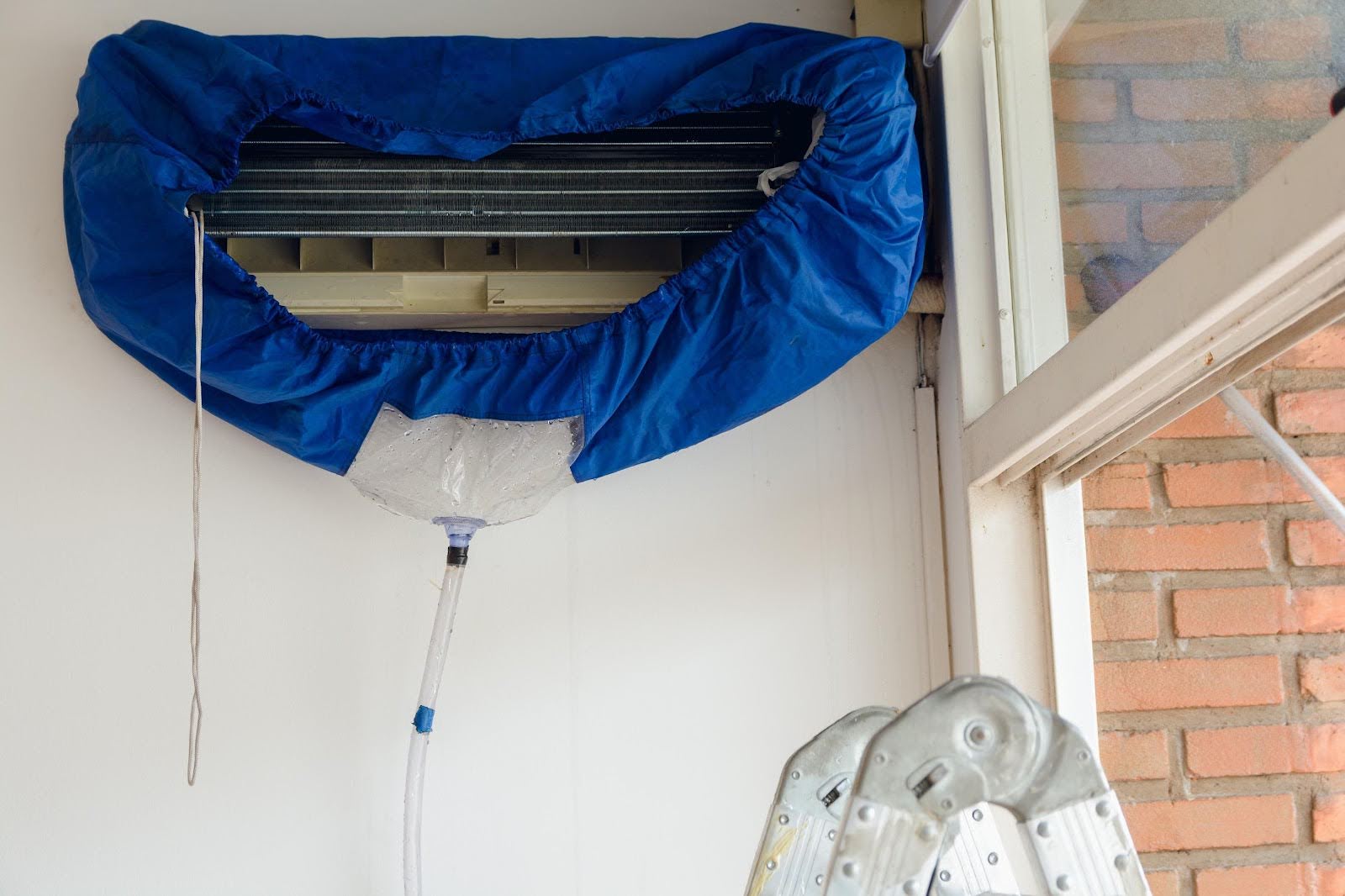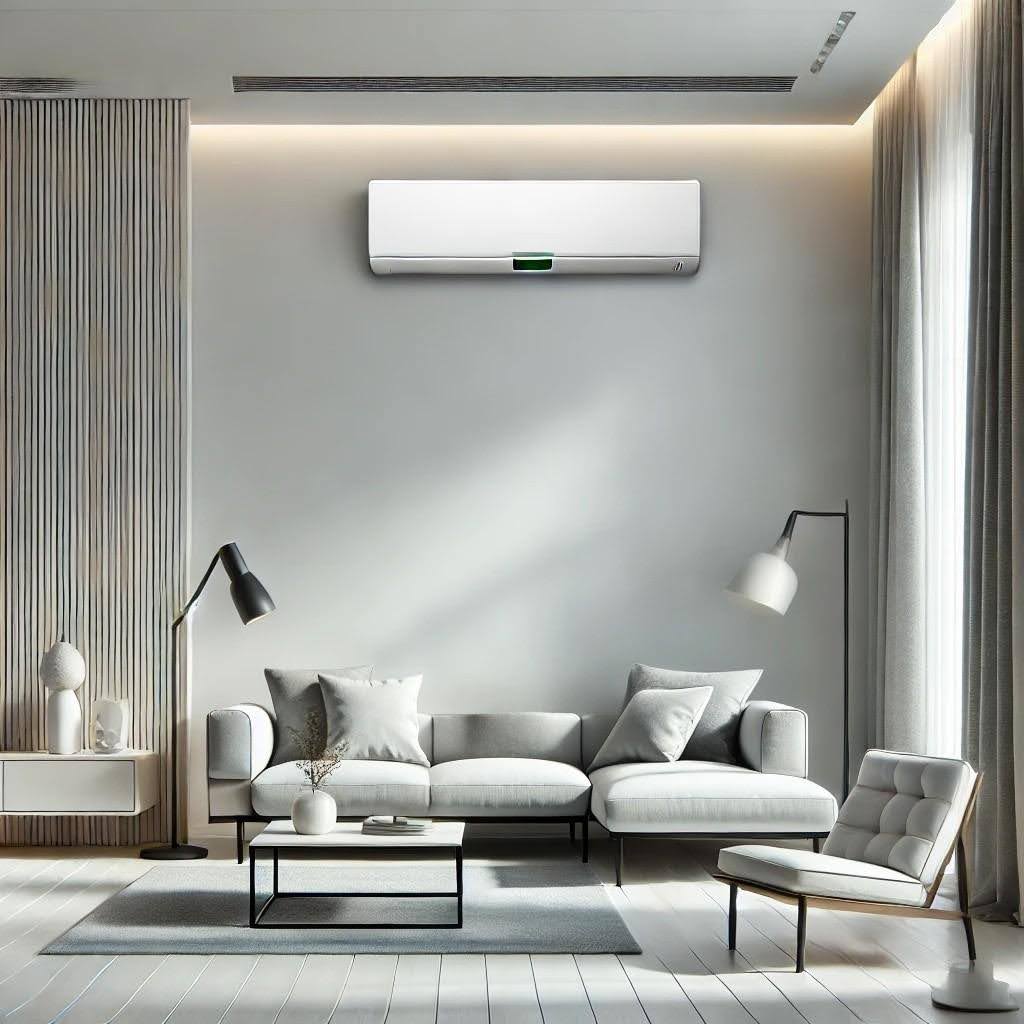No products in the cart.
If you live in a humid area, you’ve probably battled mold or mildew at some point. It shows up in corners, around vents, behind furniture, or worse, inside walls where you can’t even see it. Mold can creep into your home silently, and before you know it, it’s affecting your air quality, your health, and even the structure of your home. But did you know your mini split system could be one of your best weapons to keep it away?
Let’s break down how mold grows, why humidity is a big part of it, and how a mini split can help you stop it from spreading in the first place.
Why Backup Power Matters
Mold thrives in warm, damp places. Bathrooms, kitchens, closets, basements, and even bedrooms can become breeding grounds if the air feels sticky or stuffy. In most homes, mold starts growing when the relative humidity level is above 60 percent, and it can begin developing in as little as 24 to 48 hours under the right conditions.
Here are a few signs you might have a mold or moisture issue:
- That musty, earthy smell that lingers in certain rooms
- Black or green patches near vents, windows, or walls
- Allergies or respiratory problems that seem worse indoors
- Peeling paint or wallpaper
Mold is not just an eyesore. It can seriously affect your health, especially if you have asthma, allergies, or a weakened immune system. That’s why tackling humidity is so important.
The Link Between Humidity and HVAC
A lot of people think of their air conditioner as just a way to cool the room down. But good HVAC systems also help manage humidity levels. Unfortunately, older systems or poorly maintained ones often fall short.
Some air conditioners cool the air too quickly without removing enough moisture. This leaves behind that classic cold but clammy feeling, and that is where mold loves to grow. Inconsistent airflow, leaky ductwork, and inefficient cooling cycles only make the problem worse.
This is where mini splits come in with a smarter, more targeted solution.
How Mini Splits Naturally Reduce Humidity
One of the biggest hidden strengths of ductless mini split systems is their ability to pull moisture out of the air, especially when run in dry mode.
Dry mode is specifically designed to lower humidity without drastically cooling the room. It uses the indoor air handler to slow down the fan and give the evaporator coil more time to condense moisture out of the air. This feature is especially useful during rainy seasons, humid mornings, or in rooms like kitchens or laundry areas where excess moisture builds up fast.
Unlike central systems that cool the entire home at once, mini splits can be set up to remove moisture where you need it most.
Why Zoned Control Helps Fight Mold
Mold doesn’t grow evenly throughout a house. It usually pops up in trouble spots like:
- The bathroom with no fan
- A closed-off guest room that barely gets airflow
- A basement or garage that always feels damp
With mini split systems, each room can have its own indoor unit. That means you can focus dehumidification exactly where it is needed without overcooling the whole house.
For example:
- Keep your master bedroom cool and dry at night
- Run dry mode in your laundry room after you use the dryer
- Set your guest room to fan or dehumidify even when not in use
This type of control not only saves energy, it helps keep mold out of places you might forget about.
Best Practices for Mold Prevention Using Mini Splits
If you already have a mini split or are planning to get one, here are a few simple tips to maximize its mold-fighting power:
- Use dry mode on humid days, even if you don’t need full cooling
- Clean or replace your filters every month during peak seasons
- Keep indoor humidity between 40 and 60 percent by using a hygrometer
- Run the fan after hot showers or cooking to move moist air out
- Make sure your drain lines stay clean so collected moisture exits properly
- Schedule regular tune-ups, especially before summer and rainy months
These steps help your mini split work smarter and keep your home healthier and drier.
Why It Matters
Mold is more than just annoying. It is expensive to remove and potentially dangerous to your health. Preventing it before it starts is always the better option, and a ductless mini split can play a key role in that.
With smart moisture control, zoned settings, and quiet, energy-efficient operation, mini splits are more than just a comfort upgrade. They are part of a smart, long-term plan to keep your home fresh, breathable, and mold-free.
Thinking about installing a mini split or upgrading your current system for better humidity control?
Reach out to us at Payless Mini Split. Our team is happy to help you choose the right unit for your space and give you peace of mind, no more worrying about what might be growing behind the walls.






